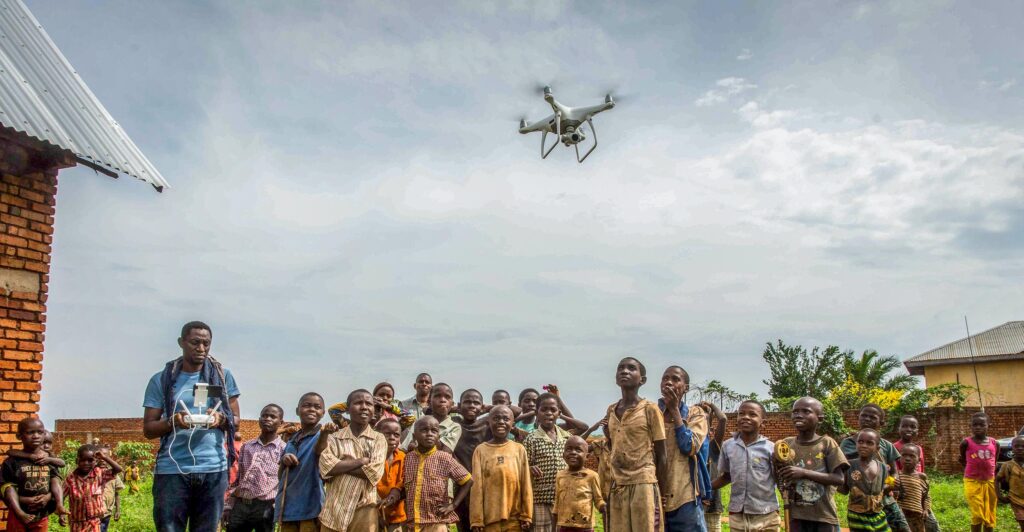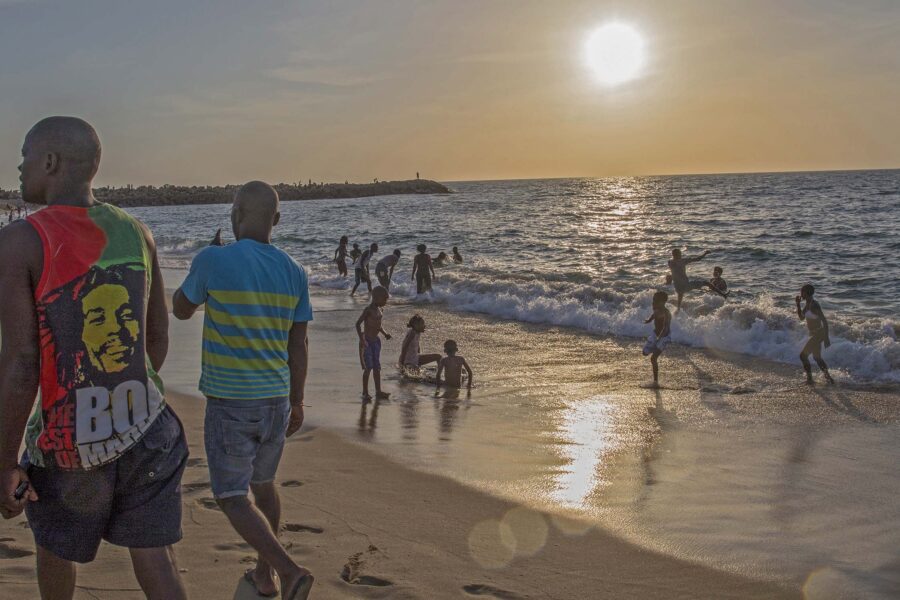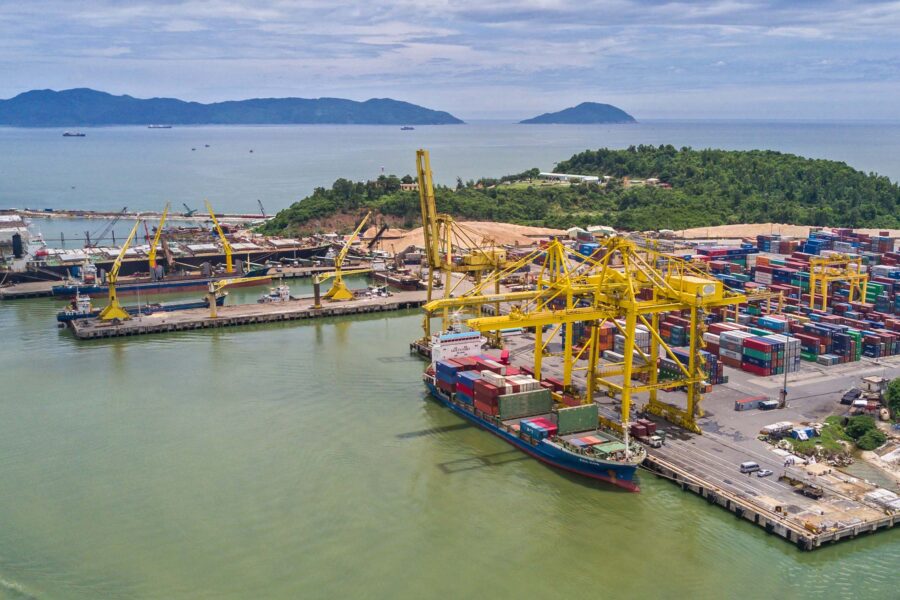Boosting technology transfer to support the SDGs in LDCs
The world’s poorest countries have most to gain from tech like AI that can rapidly accelerate SDG action, but are often the least able to utilize such innovations. We need a global, cooperative effort to ensure that the technical tools and skills that humankind has developed are available to all
Economic development — Global

As Ernest Hemingway famously once said, things go “gradually, then suddenly.” Abrupt leaps seem to be the norm with advanced technologies, as recent trends confirm. For Agenda 2030, new, frontier technologies can help to accelerate the Sustainable Development Goals (SDGs). Examples include:
- SDG 2 (zero hunger): optimized agribusiness supply chains, precision agriculture, optimized farm management, automated irrigation, and mobile device-accessible real-time weather forecasting
- SDG 3 (good health): e-health via remote diagnostics, wearables for health monitoring, DNA sequencing, and augmented reality with adjustment of prostheses
- SDG 4 (quality education): e-learning such as massive open online courses (MOOCs), augmented reality, gamification and marketing techniques, and remote training or tutorial materials
- SDG 7 (sustainable energy): optimization of recycling of materials for clean energy systems, and blockchain for energy distribution in micro-grids
- SDG 8 (decent jobs): e-banking, e-commerce, remote work, and smart manufacturing
This technological explosion brings with it much optimism. The rapid proliferation of chat tools in the first half of 2023 has accelerated a global sprint to develop human-like chatbot systems. Advances in virtual reality are generating a plethora of new possibilities in education, training, and commerce. The expected emergence of powerful applications for quantum computers, which already exist but cannot yet be fully utilized, may be a game changer in data processing. The same goes for the rapid evolution of Web3 – the new internet with decentralized applications linked through blockchain architecture – driven by cryptocurrencies (which, though still nascent, may see a rapid increase in use soon).
But there is also alarm. This array of new technologies has prompted cries of caution by civil society, governments, and related stakeholders. UN Secretary-General Antonio Guterres announced in June 2023 his thoughts on supporting a proposal to consider the creation of a new UN agency to monitor artificial intelligence (AI). As the speed and influence of this technology is unpredictable (and probably persistent), a UN body could facilitate global consensus, while also serving as a forum to discuss knowledge, coordination, legal frameworks, and the application of AI.
Getting back to basics
In this scenario, with new technologies rapidly coming on stream, it is vital to identify a policy space for least developed countries (LDCs). A fundamental question to address is to what degree SDG progress in LDCs is being held back because of scarcity of technology and expertise.
When it comes to productive transformation, LDCs are constrained by several bottlenecks, such as education, managerial capacity, and finance. But the most fundamental constraint is lack of basic infrastructure, since electricity and connectivity are key requirements to adopt and absorb frontier technologies.
The United Nations Conference on Trade and Development calculates that in LDCs, over half of people lack access to electricity, sources of energy, and proper connectivity. The International Telecommunication Union estimates that 75% of people in LDCs are offline. While the International Energy Agency indicates that 55% of people in LDCs have access to electricity, this higher number is far from any consolation. These structural barriers also impose enormous costs on firms that rely on electricity and internet access to do business.
LDCs also face tremendous difficulties with supply chains. These are the logistics – facilities, roads, highways – that convey and convert raw materials into finished products and are later distributed to consumers in local and international markets. Combined with the barriers imposed by power and communication constraints, this can make it extremely difficult to plug in to regional or global value chains.
The international community must urgently address these fundamental issues. We need dialogues between governments, UN agencies, and development banks so that infrastructure is properly deployed where it is most needed. Simultaneously, we must recognize the efforts made by the LDCs, and the further advancement expected under the implementation of the recently adopted Doha Programme of Action for the LDCs. In this context, more than ever, LDCs require support to absorb and apply technologies to avoid suffering from a digital and AI divide.
UNIDO actively supports the implementation of the Doha Programme of Action by working with the LDCs to support inclusive and sustainable industrialization. One of the many cooperation initiatives is in the area of technology. This aims to provide methodologies and toolkits for digitalization, supporting context-oriented studies, and assisting the public sector with policy design. In Propelling LDCs in the Digital Age (produced by UNIDO, the UN Technology Bank, and the Enhanced Integrated Framework for Development for the Fifth UN Conference on the LDCs), the main challenge observed for LDCs is their absorption capacity for new technologies. Encouragingly, companies are already making inroads in technology application, and those technologies can help countries to improve sustainability. At the same time, AI can also serve to improve the availability and efficiency of essential utilities in LDCs, such as electricity, water, and sanitation.
Transformational potential
Several countries are actively applying AI technology in different sectors:
- In Kenya, M-Shwari provides loans to micro-entrepreneurs and families, using AI to predict how likely potential borrowers are to default.
- In Mexico, firms are developing AI applications to improve the monitoring, treatment, early detection, and prevention of diabetes.
- In Rwanda, drones are being used to deploy pharmaceutical equipment to rural zones.
- In Bangladesh, AI is used in the textile sector to improve garment production quality.
- In Morocco, AI is being used to produce more food with less water and fertilizers.
- In Namibia, under a UNIDO project, AI analyzes agricultural land to identify invasive bushes and transform them into food for livestock, while supporting a rural circular economy.
Such examples, covering both LDCs and non-LDCs, could be further replicated or scaled up to other countries and regions.
UNIDO has a network of Investment and Technology Promotion Offices located in Bahrain, Beijing, Bonn, Shanghai, Tokyo, and elsewhere, connecting companies in high-income countries with those in developing countries. The offices support opportunities for partnerships and technology transfer, increasing the technology absorption capacity of firms in LDCs. They also support foreign direct investment, improving the capacity of SMEs. UNIDO is also launching a Global Alliance on AI as a rotating global forum to provide an international platform for governments and firms to contribute to the potential of AI for productive transformation.
We must also work together to unleash the potential of the digital commons, led by the Office of the Secretary-General’s Envoy on Technology. Open source, open data, and digital public goods are vital for building a more equitable world. We need to cooperate globally to overcome the barriers these technologies face, particularly in the areas of intellectual property rights, patents, and other proprietary issues. UNIDO is supporting this process by working closely with UN agencies and other institutions.
Action now
Many tasks lie ahead. Let us recall that technologies such as electricity, cars, and mobile phones were not immediately adopted when discovered and their absorption took several decades. But with innovation and technology like AI that can accelerate transition to a sustainable world, there is no time to wait. Societies must act now to create and update legal frameworks, protect privacy, and contain job displacement. More than ever, LDCs need to avoid the “digital divide” – and, when it comes to productivity, a potential “AI divide.” Leveling the field for innovation, investment, and technology transfer is essential.





